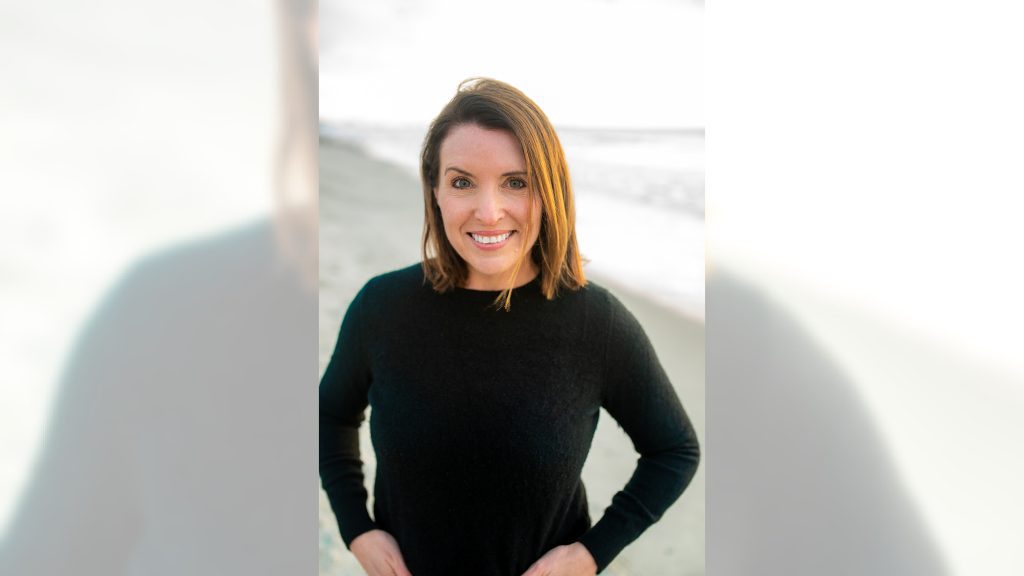Lauren Sausser | KFF Health News (TNS)
When Karla Adkins checked her eyes in the rearview mirror of her car almost 10 years ago, she saw that the whites of her eyes were yellow.
At the time, she was 36 years old and worked as a liaison between physicians for a hospital system on the South Carolina coast, where she helped build relationships among doctors. Privately, she had struggled with heavy drinking since her early 20s, believing that alcohol helped reduce her anxieties. She knew that the yellowing of her eyes was a sign of jaundice. Nevertheless, the possibility of being diagnosed with alcohol-related liver disease was not her first worry.
“Honestly, my biggest fear was someone telling me I couldn't drink anymore,” said Adkins, who resides in Pawleys Island, a coastal town about 30 miles south of Myrtle Beach.
But her drinking had caught up with her: Within 48 hours of that moment in front of the rearview mirror, she was hospitalized, facing liver failure. “It happened really quickly,” Adkins said.

In the past, alcohol use disorder has affected men more than women. But recent data data from the Centers for Disease Control and Prevention on deaths from excessive drinking reveals that rates among women are increasing faster than those among men. The Biden administration finds this trend concerning, with a new estimate suggesting that women will make up close to half of alcohol-associated liver disease costs in the U.S. by 2040, totaling $66 billion.
It’s a high-priority subject for the Department of Health and Human Services and the Department of Agriculture, which will release updated national dietary guidelines next year. But as alcoholic beverage marketing increasingly targets women, and social drinking is already a significant part of American culture, not everyone may be ready to support a change.
“This is a sensitive issue,” said Rachel Sayko Adams, a research associate professor at the Boston University School of Public Health. “There is no safe level of alcohol use,” she stated. “That’s, like, new information that people didn’t want to know.”
In the past 50 years, women have been entering the workforce more and postponing motherhood, which likely has contributed to the issue since women historically drank less when they became mothers.
“Parenthood used to be a protective factor,” but that's not always the case anymore, said Adams, who studies addiction.
More than 600,000 people in the U.S. died from alcohol-related causes between 1999 and 2020, according to research published in JAMA Network Open last year, placing alcohol among the leading causes of preventable death in this country after tobacco, poor diet and physical inactivity, and illegal drugs.
The World Health Organization and several studies have discovered that no quantity of alcohol is considered safe for human health. Even moderate drinking has been associated with health issues, such as high blood pressure and heart disease and an heightened chance of breast and other cancers.
Recently, the COVID-19 pandemic has significantly worsened excessive drinking, as people turned to alcohol to manage stress. This is especially true for women, who are more likely than men to use alcohol as a coping mechanism, according to George Koob, director of the National Institute on Alcohol Abuse and Alcoholism at the National Institutes of Health.
However, women are often the targeted audience for advertising of low-calorie wines, for example, which has seen a rapid increase in recent years. rosé sales and Lately, there has been a surge in the promotion of low-calorie wines., for example, has exploded in recent years. Recent research published by the International Journal of Drug Policy in February revealed that the alcohol industry commonly employs the tactic of targeting the female market by developing products marketed as appealing to women. The emergence of a phenomenon largely perpetuated by women on social media, making light of drinking to cope with the challenges of motherhood, is also a factor. According to Adams, there is a misperception surrounding the “mommy wine culture” that suggests drinking in moderation is acceptable and harmless.
The emergence of a phenomenon largely perpetuated by women on social media, making light of drinking to cope with the challenges of motherhood, is also a factor. According to Adams, there is a misperception surrounding the “mommy wine culture” that suggests drinking in moderation is acceptable and harmless.
While the influence of memes and online videos on women’s drinking habits is unclear, Adams and colleagues found in a study last year that women without children at age 35 are the highest risk group for binge-drinking and alcohol use disorder symptoms among all age groups of women. The research also noted that over the past twenty years, the risk has been escalating for both childless women and mothers.
The combination of these factors, along with the pressure to conform, can make it challenging to address excessive drinking. “It’s a very taboo topic,” noted Adams.
According to Stephanie Garbarino, a transplant hepatologist at Duke Health, when the topic does arise, it’s often surprising how many patients are unaware of the impact of their drinking on their health.
“Often, they didn’t know there was anything wrong with what they’re doing,” she said. She is noticing an increasing number of younger patients, both men and women in their 20s and 30s, with liver disease.

Public health and addiction experts are concerned that alcohol-related liver disease among women will become a costly issue for the nation to address. In 2022, women accounted for 29% of all costs associated with the disease in the U.S. and are projected to account for 43% by 2040, according to a new analysis published in the American Journal of Gastroenterology in February. A new analysis published in the American Journal of Gastroenterology in February, estimates that women made up 29% of all costs associated with alcohol-related liver disease in the U.S. in 2022 and are expected to account for 43% by 2040.
According to national dietary guidelines, women are advised to consume no more than one alcoholic drink per day. These guidelines will undergo a five-year review by the USDA and HHS next year. up for a five-year review next year by the USDA and HHS, which has called a special committee to examine, among other questions, the relationship between alcohol consumption and cancer risks. The report will be made public in 2025.
When Canada issued guidance in 2023 recommending that consuming more than two alcoholic drinks per week carries health risks, Koob caused negative reaction remarks to the Daily Mail when his suggested that U.S. guidelines may go in the same direction. The CDC report issued in February indicated that an increase in alcohol taxes could assist in decreasing excessive alcohol use and deaths. Koob’s office would not provide input on such policies. This is a subject that is important to Adkins. She now works as a coach to support others — mainly women — in stopping drinking, and mentioned that the pandemic led her to write a book about her near-death experience from liver failure. Even though Adkins lives with cirrhosis, this September will mark 10 years since her last drink.
“The remarkable thing is, you can’t deteriorate much more than I did,” said Adkins. “My hope is really to alter the storytelling.”
KFF Health News
(is a national newsroom that produces extensive journalism about health issues and is one of the primary operational programs of — the independent source for health policy research, polling and journalism.) KFF ©2024 KFF Health News. Distributed by Tribune Content Agency, LLC.
Recent CDC data on deaths from excessive drinking reveals that rates among women are increasing more rapidly than among men.









